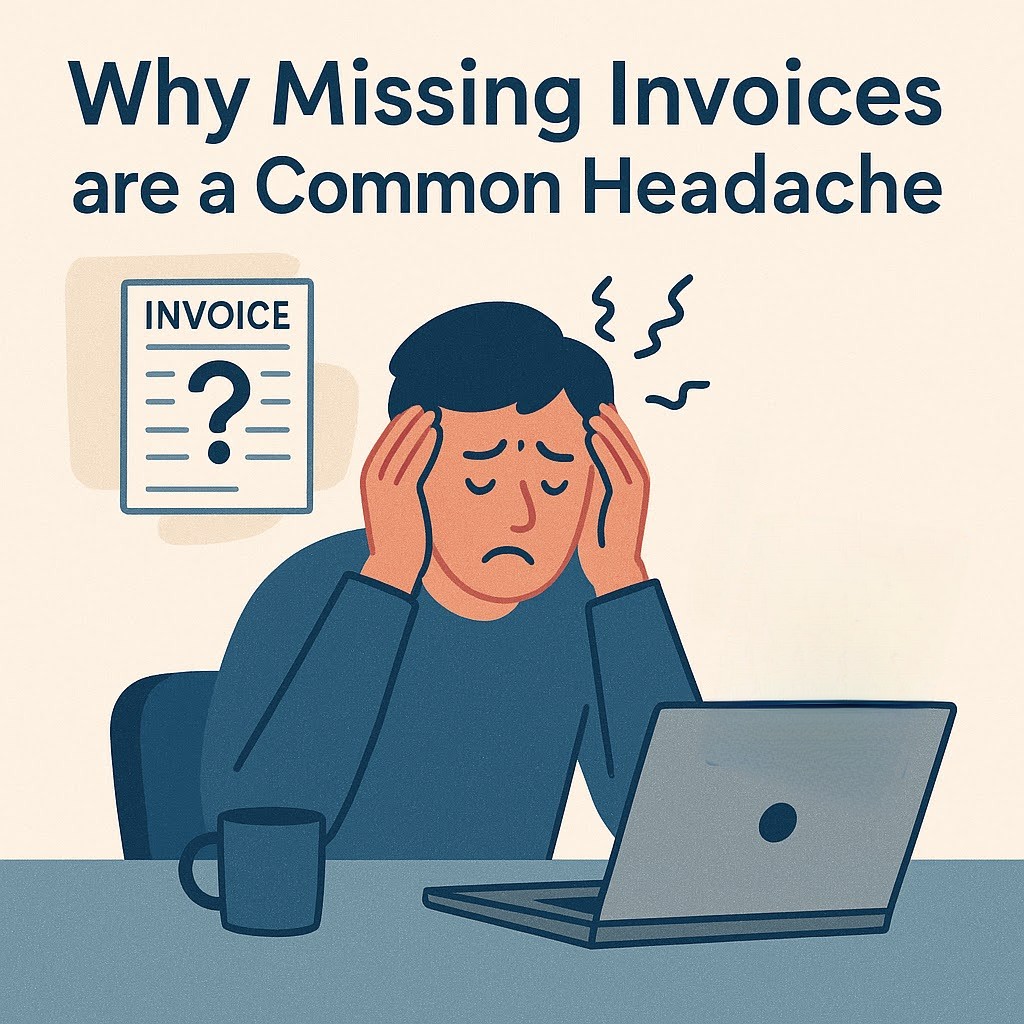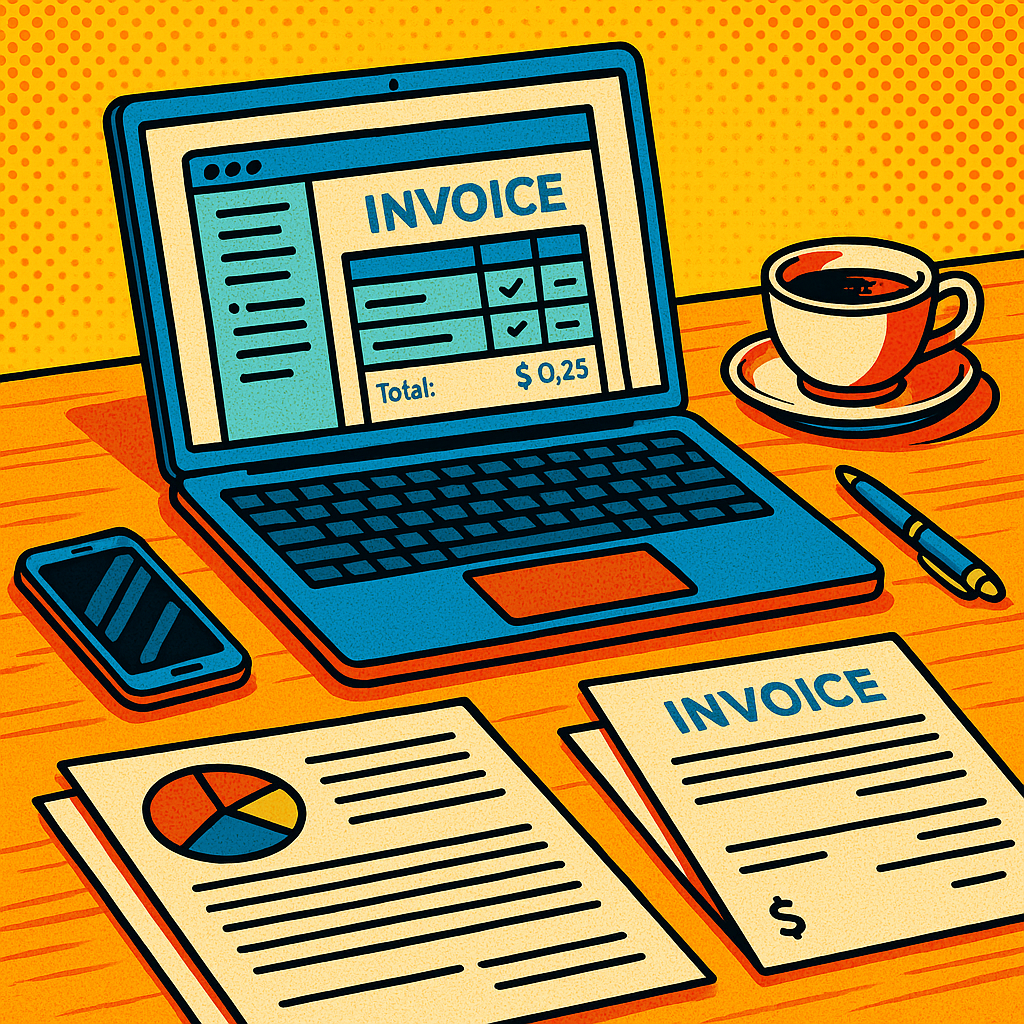The Art of Generating Missing Invoices Effortlessly
Why Missing Invoices Are More Than Just a Nuisance
Imagine you’re closing your financial quarter, and there you are, staring at your spreadsheets, a cup of coffee in hand as you scan for the usual suspects—those glaring gaps where invoices should be. Missing invoices are a common snag in business operations, but they really are so much more than just a minor annoyance. They disrupt cash flow, hinder financial reporting accuracy, and can even affect your company’s reputation. Ever had a client question your record-keeping because of misplaced invoices? It’s not just frustrating; it’s a potential red flag for your business.

As managers and accounting professionals, we’ve all faced those moments of bewilderment when invoices mysteriously vanish into the ether, and the clock ticks unforgivingly towards tax season. Could there be a more foolproof way to get a grip on this common chaos? That’s precisely where a tool like InvoiceGenie can turn the tide, transforming a potentially chaotic process into a streamlined, efficient procedure. More on that soon.
Unveiling InvoiceGenie: Your Ally in Seamless Invoicing
Does the thought of yet another software tool make you groan? I get it. But consider this: InvoiceGenie is designed specifically for those vexing moments when you need to generate missing invoices quickly and efficiently. With the click of a button, you can ensure all your financial ducks are in a row, eliminating the perpetual game of email ping-pong with your providers. It’s not just about saving time (though who doesn’t need more of that?). Tools like InvoiceGenie also bolster your credibility with clients and providers alike. It’s like inviting your own personal financial bodyguard to the meeting. Curious about the details? Check out how you can leverage such invoicing solutions in our detailed guide here.
Practical Steps to Generate Missing Invoices
Step 1: Identify and Analyze Gaps in Your Invoice Records
Picture this: you’re in a meeting, and someone asks about your strategy for identifying invoice gaps. Most of us instinctively mention our accounting systems, right? But here’s the kicker—relying solely on those systems often leaves blind spots. I recall a conversation with a peer just last week; she shared how regular audits transformed her team’s accounting process. Audits, whether monthly or quarterly, can pinpoint anomalies before they become stumbling blocks. Recent trends show an uptick in businesses integrating these audits with their digital accounting systems for maximum efficiency.
Step 2: Engaging with Providers Proactively
Have you ever played the waiting game after sending an invoice request email? It can feel like shouting into a void. Effective communication is key, and the best strategy is proactive engagement. During a recent conference, a renowned CFO mentioned how his team reduced response times by employing technology that tracks communication frequency—no more unanswered emails lost in cyberspace. Consider setting reminders or even automating follow-ups to keep that dialogue open.
Step 3: Utilize Technology for Automated Invoice Generation
We live in a digital age where technology can shoulder some of our load. Automating invoice generation? It’s a game-changer! I remember discussing with a colleague how utilizing automation tools can drastically reduce errors—a sentiment backed by the widespread adoption of software for invoicing tasks. With tools like InvoiceGenie, the once-tedious process becomes almost effortlessly automated, ensuring compliance and reducing manual input risks.
Step 4: Documentation and Compliance Checklists
Let’s not forget compliance. Keeping those documentation ducks in a row is crucial for tax purposes. Implementing checklists can save you from compliance headaches down the road. During a session at a recent tax seminar, the speaker emphasized the importance of detailed checklists in maintaining accurate financial records. Take it from someone who’s been there—integrate a compliance checklist with your workflow, and your future self will thank you.
Overcoming Invoicing Challenges
Handling Resistant Providers
Now, you might be thinking, “Sure, automation and technology are great, but what about providers who just aren’t cooperative?” It’s a valid point. Providers can sometimes be notoriously slow, and it feels like you’re pulling teeth to get the documentation you need. But here’s the thing: persistence combined with technology can make a world of difference. Implementing systems that track interactions can build a case for escalation if necessary. It might feel like navigating a maze at times, but clarity in communication and steadfast follow-up can tip the scales in your favor.
Dealing with Incomplete or Inaccurate Data
But let’s tackle another pesky issue: incomplete or inaccurate data. How often have we opened up records only to find them riddled with inconsistencies? It’s frustrating, right? And it’s even more infuriating when those errors snowball into larger problems. Here’s what often gets overlooked—routine checks and validation processes. Yes, they can feel like more work at first, but ultimately, they save time (and sanity). Seek to implement double-check systems, possibly having another pair of eyes on important documents. This not only reduces error rates but boosts teamwork as well.
Avoiding Common Pitfalls
The Risk of Manual Processes
But wait—manual processes also deserve a mention. Manual entries might seem harmless, perhaps even necessary when technology feels overwhelming. Yet, repetitive manual errors are a silent productivity killer. Automating where possible not only minimizes these risks but also liberates your time. The key is to find a workflow that balances human oversight with technological efficiency. It’s a paradigm shift, no doubt, but embracing it can elevate your business operations.
Importance of Maintaining Consistent Processes
Finally, there’s the challenge of consistency. Fluctuating between different processes or tools can create chaos. Achieving uniformity in procedures provides clarity and reliability. And let’s face it, having solid, repeatable processes safeguards against the irregularities that can arise in the day-to-day. Stick to a plan, tweak it when necessary, and watch as your invoicing turns from a headache into a streamlined success.
Embrace a Hassle-Free Invoicing Future
Streamline Your Workflow with InvoiceGenie
So here we are, full circle from where we began—staring down those pesky missing invoices that seem to mock us right from the financial fringes. Reflecting on our journey through practical strategies and overcoming common hurdles, one truth becomes clear: simplifying our invoicing process with tools like InvoiceGenie isn’t just beneficial, it’s essential. It’s about transforming an age-old business headache into a seamless operation, much like turning chaos into order.
When you’re back at your desk tomorrow, coffee in hand, glance at your invoicing files with a fresh perspective. Could the automation strategies we discussed become your new norm? Can proactive provider engagement redefine your communication strategy into something more efficient and less stress-inducing? The roadmap we’ve charted might just hold the key to unshackling your processes from outdated, ineffective habits.
Additional Resources
But here’s a parting thought—dare to experiment. Reflect on how integrating these insights into your operations could redefine your financial workflow. Sometimes, it’s these small shifts in approach that lead to big, innovative transformations. After all, an insight left unapplied is like an unspent fortune in business acumen.
So, what’s your next move? Will today mark the beginning of a streamlined invoicing process? As you ponder that, perhaps take a moment to explore additional resources on enhancing invoicing efficiency—we’ve peppered in insights across related articles on InvoiceGenie’s blog. Each piece is a stepping stone on your path to mastering the art of invoicing. After all, in business, as in life, what seems like a small detail—an invoice here, a receipt there—can be the very thread that ties together a tapestry of success.
Frequently Asked Questions: The Art of Generating Missing Invoices Effortlessly
Q1: What are the initial steps discussed in “The Art of Generating Missing Invoices Effortlessly” for identifying missing invoices?
A: To tackle missing invoices effectively, the article suggests starting with an identification and analysis of gaps in your invoice records. Regular audits and integration with accounting systems are essential to spot anomalies early and keep your financial records accurate.
Q2: How does engaging with providers proactively, as recommended in the article, benefit my business?
A: Proactive engagement with providers ensures timely communication and reduces delays in receiving invoices. By setting reminders and automating follow-ups, you maintain open lines and foster better relationships, thus streamlining your invoice generation process.
Q3: Can employing invoice generation tools like InvoiceGenie really make a difference?
A: Yes, InvoiceGenie and similar tools can significantly impact efficiency by automating repetitive tasks and minimizing errors. According to the article, using such technology turns cumbersome manual tasks into seamless operations, thereby enhancing overall productivity. Learn more about this process in our guide on transformative invoicing tools.
Q4: What challenges related to missing invoices are covered in the article?
A: “The Art of Generating Missing Invoices Effortlessly” discusses several challenges, including handling resistant providers and dealing with incomplete or inaccurate data. The article offers strategies to overcome these issues, ensuring smoother collection and management of invoices.
Q5: How can consistent processes prevent future invoicing issues, as explained in the article?
A: Consistent processes provide a reliable framework that guides invoicing tasks and prevents discrepancies. As the article outlines, maintaining uniformity in procedures reduces chaos and ensures that missing invoices become an issue of the past, allowing businesses to focus on growth and efficiency.

